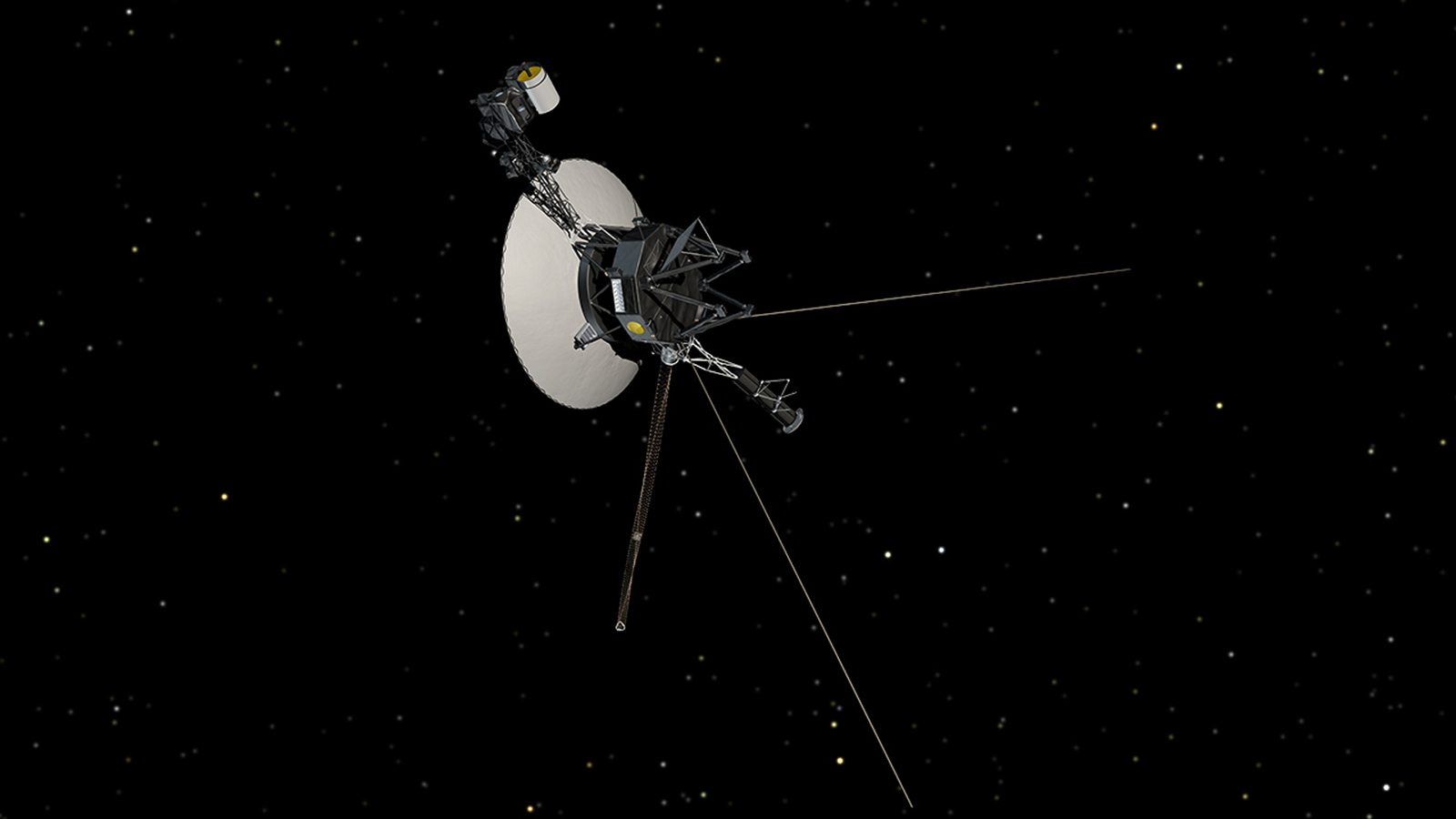Voyager 1 Rides 'Tsunami Wave' in Interstellar Space

It turns out that sailing through interstellar space isn't so peaceful.
NASA's Voyager 1 spacecraft — the only object made by humans to reach interstellar space — might still be caught what scientists have described as a cosmic "tsunami wave," a shock wave that first hit the probe in February, according to new research. You can hear the eerie interstellar vibrations in a video, courtesy of NASA.
"Most people would have thought the interstellar medium would have been smooth and quiet," study researcher Don Gurnett, professor of physics at the University of Iowa, and the principal investigator of Voyager 1's plasma wave instrument, said in a statement from NASA. "But these shock waves seem to be more common than we thought." [Photo Timeline: Voyager 1 in Interstellar Space]
Such a shock wave was what helped scientists determine that Voyager 1, which launched in 1977 on a "grand tour" of the outer planets, had officially left the solar system.
Last year, researchers keeping tabs on the car-sized spacecraft (12 billion miles away) analyzed measurements the Voyager 1 made in the aftermath of a powerful eruption from the sun known as a coronal mass ejection, or CME. This solar blast occurred in March 2012 and hit Voyager 1 from April to May 2013. The shock wave caused the particles around the spacecraft to vibrate substantially. Based on the frequency of these vibrations, scientists could measure the density of the probe's surroundings.
The density of the particles around Voyager 1 was 40 times higher than scientists had previously observed when the space probe was still in the outer layers of the heliosphere, the giant bubble of charged particles and magnetic fields that surrounds the sun and the planets in our solar system. Voyager 1 team members concluded that the spacecraft had exited the heliosphere and entered a new cosmic realm. After researchers went back and looked at old data, they concluded that Voyager 1 crossed into interstellar space on August 25, 2012.
Voyager 1 detected its third and most recent interstellar shock wave in February. The vibrations were still going on as of November data, according to NASA. That's remarkable considering that over the course of this event, the spacecraft has traveled 250 million miles (400 million kilometers).
Get the Space.com Newsletter
Breaking space news, the latest updates on rocket launches, skywatching events and more!
The researchers say they are not sure how fast the wave is moving or how big a region it covers. And they're still trying to understand what they can learn from these waves.
"The density of the plasma is higher the farther Voyager goes," Ed Stone, project scientist for the Voyager mission from the California Institute of Technology, said in a statement from NASA. "Is that because the interstellar medium is denser as Voyager moves away from the heliosphere, or is it from the shock wave itself? We don't know yet."
The latest findings were presented Monday (Dec. 15) at the American Geophysical Union meeting in San Francisco.
Follow Megan Gannon on Twitter. Follow us @Spacedotcom, Facebook or Google+. Originally published on Space.com.
Join our Space Forums to keep talking space on the latest missions, night sky and more! And if you have a news tip, correction or comment, let us know at: community@space.com.

Megan has been writing for Live Science and Space.com since 2012. Her interests range from archaeology to space exploration, and she has a bachelor's degree in English and art history from New York University. Megan spent two years as a reporter on the national desk at NewsCore. She has watched dinosaur auctions, witnessed rocket launches, licked ancient pottery sherds in Cyprus and flown in zero gravity on a Zero Gravity Corp. to follow students sparking weightless fires for science. Follow her on Twitter for her latest project.